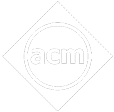- Written By
Jyoti Saxena
- Last Modified 30-01-2023
Buy and Sell: Definitions, Explanation and Examples
Buy and Sell: Have you have heard the name of the websites named Amazon, Flipkart, OLX, GoDaddy, etc. What do they deal with??? They deal with the buying and selling of daily needs like groceries, furniture, fruits, vegetables etc.,
The world of arithmetic is the world of practical maths. In our day-to-day life, we purchase various items of daily usage like grocery items, fruits and vegetables. In purchasing these items, we act as buyers, whereas the shopkeeper behaves as a seller in the whole transaction. There are many instances where we buy or sell goods. Now, to understand the whole concept of buy and sell, let us dive into this article.
Definition of Buy and Sell
We all go to shopping malls, markets, grocery shops and other shops to buy clothing, furniture, vegetables, grocery objects, etc. All of these objects have some maximum price mentioned on them. Often we tend to bargain for the things we purchase. Sometimes we get objects at the bargained price while the shopkeeper is often not in the mood to negotiate, and we have to buy the object at a price mentioned on the thing.
Here, we are known as the buyer, and the shopkeeper is known as the seller. Taking a commodity in exchange for cash is known as buying, and giving away something in place of the money is known as selling.
In simple terms, buying is acquiring an object in exchange for money, whereas selling is acquiring money to abandon the ownership of any entity.
Difference Between Buy and Sell
In general, buying and selling are two terms that are often used relatively. Buying and selling are the two sides of the same coin; when one sells something, someone else is buying it. Hence, the terms buying and selling go hand in hand.
The main difference between buying and selling is that buying is acquiring an object in exchange for money. In contrast, selling is receiving cash in exchange for relinquishing all claims of ownership from an object.
For example, Madhurima sold her car to Priya. Here, Madhurima gives Priya her vehicle and takes money from Priya. On the other hand, Priya gave cash and accepts the vehicle from Madhurima. Thus, the car now belongs to Priya, as she has paid money for it, i.e., Priya brought the car from Madhurima. And, hence, Priya is the buyer here, and Madhurima is the seller.
What is Cost Price and Selling Price?
To understand the concept of buying and selling, we should first learn and understand some basic terms involved in a transaction.
Cost Price
The cost price of an article is the price at which the article is initially purchased, or the product is manufactured. It is abbreviated as \(CP\).
In the above example of Madhurima selling the car to Priya, the amount for which Madhurima initially brought the car is the vehicle’s cost price. If I am manufacturing a car, then the cost involved in the car’s production is the cost price.
Selling Price
The selling price for an article is the price at which the article is sold. It is abbreviated as \(SP\). In the same above example of Madhurima selling the car to Priya, the amount Priya gave to Madhurima to get the car is the selling price of the car.
If I am manufacturing a car, the on-road price for that car, including the taxes and all that the buyer must remit, is the car’s selling price.
Profit or Gain
Profit
If the selling price of an article is more than the cost price, then there is gain or profit in the transaction. If \(SP>CP\), then there is a profit or gain.
Thus, the formula to find the profit is, Profit \(=SP-CP\).
In the same example of Madhurima selling the car to Priya, if Madhurima gets an amount from Priya that is higher than what she spent buying the car initially, then the transaction is in profit. Let us consider another example.
Suppose Jyoti bought an apple at \(₹40\) and sold it at \(₹45\). Jyoti is buying the apple at \(₹40\)
So, the cost price, \(CP=₹40 \)
And she is selling the apple at \(₹45\).
So, the selling price \(SP=₹45 \)
Now, we can see that \(SP>CP\). Therefore, it is profit and the amount of profit \(=₹45-₹40=₹5\)
Hence, the profit obtained in selling the apple is \(₹5\).
Loss
When the selling price is less than the cost price, then there is a loss in the transaction. If \(SP<CP\), then there is a loss.
Loss \(=CP-SP\)
For example, consider a man buying an article at \(₹40\) and selling it at \(₹35\).
Now, the cost price \(CP=₹40\) and the selling price \(SP=₹35\)
Here \(CP>SP.\)
Therefore, it is a loss. Amount of loss \(=₹40-₹35=₹5\)
How to Calculate Profit and Loss?
We use profit and loss formulas to compute the profit or loss that has been achieved by selling an article. Profit and loss as a percentage are usually measures to illustrate how much profit or loss a trader incurred from any deal.
- When the selling price of any article sold is greater than the cost price (the price at which the article was initially bought), gain or profit is made.
- When the selling price of any article sold is lesser than the cost price (the price at which the article was initially bought), the loss is made.
Some important formulas related to profit and loss are given below.
- Profit percentage \(\left( {P\% } \right) = \left( {\frac{{{\rm{Profit}}}}{{{\rm{Cost}}\,{\rm{Price}}}}} \right) \times 100\)
- Loss percentage \(\left( {L\% } \right) = \left( {\frac{{{\rm{Loss}}}}{{{\rm{Cost}}\,{\rm{Price}}}}} \right) \times 100\)
- Selling price\( = \left\{ {\left( {\frac{{100 + P\% }}{{100}}} \right)} \right\} \times CP\) (when \(SP>CP\))
- Selling price \( = \left\{ {\left( {\frac{{100 – L\% }}{{100}}} \right)} \right\} \times CP\) (when \(SP < CP\))
- Cost price \( = \left\{ {\left( {\frac{{100}}{{100 + p\% }}} \right)} \right\} \times SP\) (when \(SP > CP\))
- Cost price \( = \left\{ {\left( {\frac{{100}}{{100 – L\% }}} \right)} \right\} \times SP\) (when \(SP < CP\))
Solved Examples – Buy and Sell
Q.1. A shopkeeper brought a chair for \(₹750\) and sold it for \(₹800\). Find his gain or profit.
Ans: The cost price of the chair is \(₹750,\) and the selling price of the chair is \(₹800.\)
Since, \(SP>CP,\) the transaction is profit.
We know that, Profit \(=SP-CP\)
Profit or gain \(=₹800-₹750=₹50\)
Hence, the profit he earned on selling the chair is \(₹50.\)
Q.2. The cost price of an item is \(₹240\). If the shopkeeper sells it at a loss of \(10%\), find the price at which it is sold?
Ans: Here, \(CP=₹240,\) and loss \(=10%\)
Loss \(=10%\) of \(₹240.\)
Therefore, loss \( = \frac{{10}}{{100}} \times ₹240 = ₹24\)
\(SP=CP\) -Loss
\(=₹240-₹24\)
\(=₹216\)
Thus, the item is sold for \(₹216.\)
Q.3. The cost price of an item is \(₹3,760\). If it is sold at \(15%\) profit, find its selling price.
Ans: Here, \(CP=₹3,760\)
Profit \(=15%\) of \(C P=\frac{15}{100} \times ₹ 3,760=₹ 564\)
Now, \(SP=CP+Profit\)
\(=₹ 3,760+₹ 564=₹ 4,324\)
Thus, the item is sold for \(₹4,324\)
Q.4. Preethu bought a cycle for \(₹3,500\) and sold it for \(₹4,200\). Find the profit made by Preethu.
Ans: Here, cost price \(=₹3,500\) and selling price \(=₹4,200.\)
Here, \(SP>CP\)
Therefore, profit \(=SP-CP\)
\(=₹4,200-₹3,500\)
\(=₹700\)
Hence, Preethu made a profit of \(₹700.\)
Q.6. Manu and Gaurav each brought a house in a gated community. The cost of each house was \(₹2850000\). After a while, they both sold their houses. Manu got \(₹3050000\), and Gaurav got \(₹3300000\) for his house. Who made a better deal?
Ans: Cost price of the house for both \(=₹2850000\)
The selling price of Manu’s house is \(₹3050000.\)
Therefore, the profit made by Manu in selling his house is \(=SP-CP\)
\(=₹3050000-₹2850000\)
\(=₹200000\)
Now, the selling price of Gaurav’s house is \(₹3300000.\)
Therefore, the profit made by Gaurav in selling his house is \(=SP-CP\)
\(=₹3300000-₹2850000\)
\(=₹450000\)
Thus, it is clear from the above that Gaurav’s profit is more than Manu’s profit. Hence, Gaurav made a better deal.
Summary
In this article, we learned about the concept of buy and sell. We knew the other terminologies associated with the idea of buy and sell, like, selling price, cost price, profit, loss, profit per cent and loss per cent. In addition to this, we also learned the formulas to find the selling price and cost price. We mastered the concept by taking some examples and then solving them.
Frequently Asked Questions (FAQ) – Buy and Sell
Q.1. What is buy and sell?
Ans: Taking a commodity in exchange for cash is known as buying, and giving away something in place of the cash is known as selling.
Q.2. What is the definition of selling price in maths?
Ans: The selling price for an article is the price at which the article is sold. It is abbreviated as \(SP.\)
Q.3. How to calculate profit?
Ans: If the selling price of an article is more than the cost price, then there is gain or profit in the transaction. If \(SP>CP\), then there is a profit or gain.
Thus, the formula to find the profit is,
Profit \(=SP-CP\)
Q.4. What is the CP formula?
Ans: The formula for cost price is as follows.
1. Cost price \( = \left\{ {\left( {\frac{{100}}{{100 + p\% }}} \right)} \right\} \times SP(when\, SP > CP)\)
2. Cost price \( = \left\{ {\left( {\frac{{100}}{{100 – L\% }}} \right)} \right\} \times SP(when\,SP < CP)\)
Q.5. What is the formula of Cost Price And Selling Price?
Ans: The amount paid to buy a product or the price at which a product is made is known as cost price.
\({\rm{Cost}}\,{\rm{price}} = {\rm{Selling}}\,{\rm{price}} – {\rm{Profit}}\) (with profit)
\({\rm{Cost}}\,{\rm{price}} = {\rm{Selling}}\,{\rm{price}} + {\rm{Loss}}\)
The price at which a product is sold is known as the selling price.
\({\rm{Selling}}\,{\rm{price}} = {\rm{Cost}}\,{\rm{price}} + {\rm{Profit}}\)
\({\rm{Selling}}\,{\rm{price}} = {\rm{Cost}}\,{\rm{price}}\, – {\rm{Loss}}\)
We hope this detailed article on the concept of buy and sell helped you in your studies. If you have any doubts, queries or suggestions regarding this article, feel to ask us in the comment section and we will be more than happy to assist you. Happy learning!








































